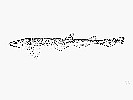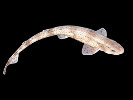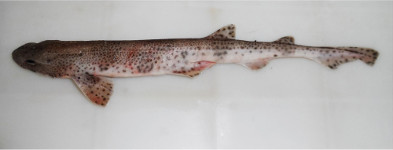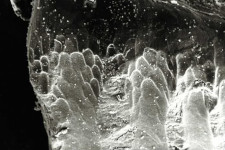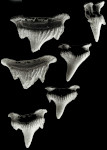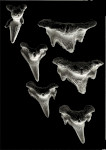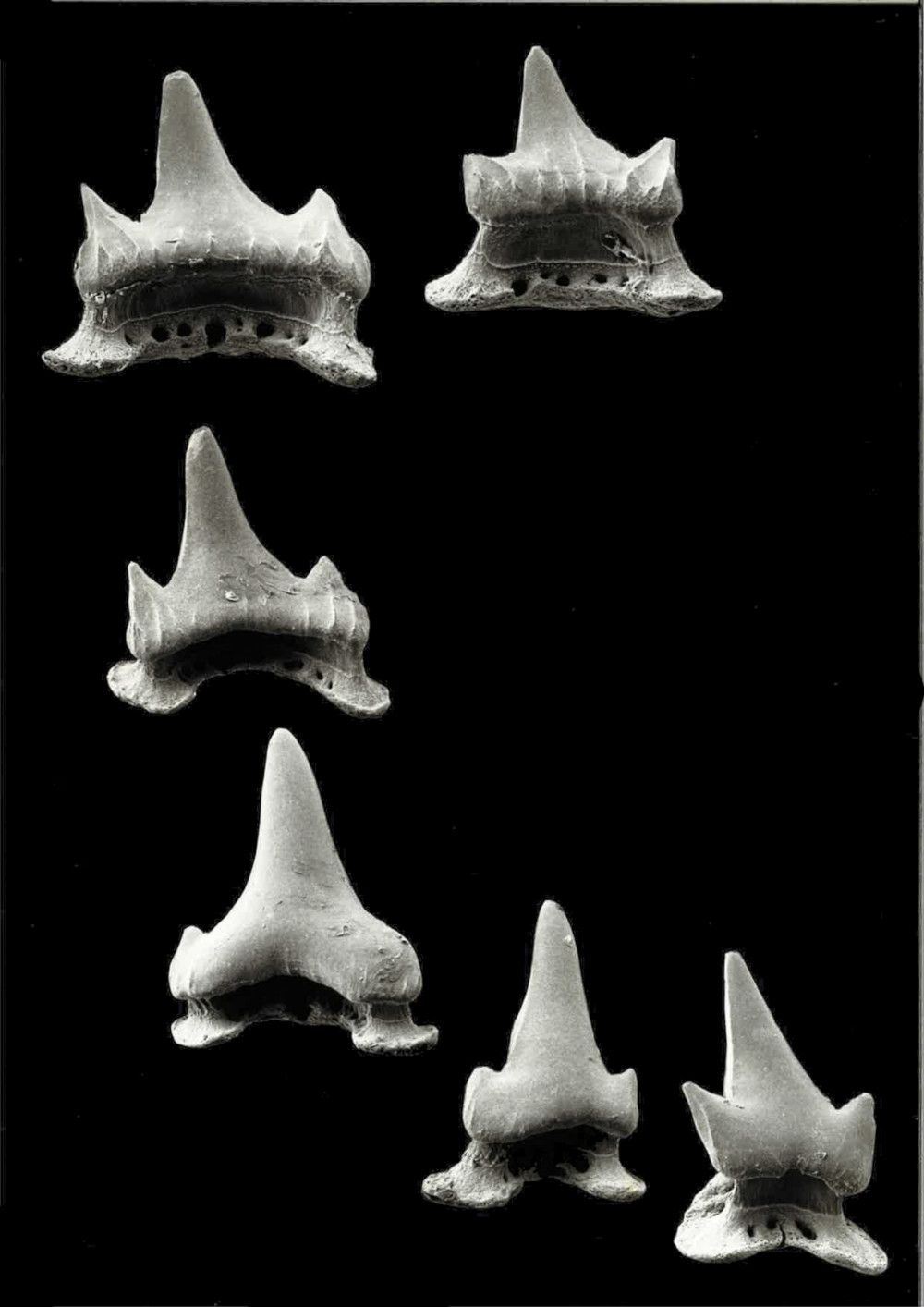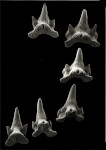Scyliorhinus canicula
(Linnaeus, 1758)
Small-spotted catshark
Classification: Elasmobranchii Carcharhiniformes Scyliorhinidae
Reference of the original description
Systema Naturae per regna tria naturae, regnum animale, secundum classes, ordines, genera, species, cum characteribus differentiis synonymis, locis. Tomus I. Editio decima, reformata. Stockholm, Laurentii Salvii, 824pp.
Systema Naturae per regna tria naturae, regnum animale, secundum classes, ordines, genera, species, cum characteribus differentiis synonymis, locis. Tomus I. Editio decima, reformata. Stockholm, Laurentii Salvii, 824pp.
Image of the original description
No image in first description.
No image in first description.
Synonyms / new combinations and misspellings
Catulus caniculus, Galeus caniculus, Galeus catulus, Scyliorhinus aff. canicula, Scyliorhinus canicula albomaculata, Scyliorhinus caniculus, Scyliorhinus cf. canicula, Scyliorhinus (Scyllium) canicula, Scylliorhinus canicula, Scylliorhinus caniculus, Scylliorhinus (Scyllium) canicula, Scyllium acutidens, Scyllium canicula, Scyllium caniculum, Scyllium (Scyliorhinus) canicula, Squalus canicula, Squalus catulus, Squalus elegans
Catulus caniculus, Galeus caniculus, Galeus catulus, Scyliorhinus aff. canicula, Scyliorhinus canicula albomaculata, Scyliorhinus caniculus, Scyliorhinus cf. canicula, Scyliorhinus (Scyllium) canicula, Scylliorhinus canicula, Scylliorhinus caniculus, Scylliorhinus (Scyllium) canicula, Scyllium acutidens, Scyllium canicula, Scyllium caniculum, Scyllium (Scyliorhinus) canicula, Squalus canicula, Squalus catulus, Squalus elegans
Types
Scyliorhinus canicula
Scyliorhinus canicula albomaculata
XXXX: No types known;
Squalus catulus
XXXX: No types known;
Squalus elegans
XXXX: No types known;
Scyliorhinus canicula
Scyliorhinus canicula albomaculata
XXXX: No types known;
Squalus catulus
XXXX: No types known;
Squalus elegans
XXXX: No types known;
Description :
Citation: Scyliorhinus canicula (Linnaeus, 1758): In: Database of modern sharks, rays and chimaeras, www.shark-references.com, World Wide Web electronic publication, Version 12/2025
Please send your images of "Scyliorhinus canicula" to info@shark-references.com

Scyliorhinus canicula (Linnaeus, 1758); female, captured in the Gulf of Roses, Spain, 120 m depth © Claudio Barria, Department of Natural Resources, Institute of Marine Sciences of Barcelona (ICM), Spain. Catsharks, Taurons i Rajades de Catalunya

Scyliorhinus canicula (Linnaeus, 1758); female, captured in the Gulf of Roses, Spain, 120 m depth © Claudio Barria, Department of Natural Resources, Institute of Marine Sciences of Barcelona (ICM), Spain. Catsharks, Taurons i Rajades de Catalunya
Common names
 Katzenhai,
Katzenhai,  Kleiner Katzenhai,
Kleiner Katzenhai,  Kleingefleckter Katzenhai,
Kleingefleckter Katzenhai,  Breka,
Breka,  Cat,
Cat,  Catuarraya,
Catuarraya,  Galeo,
Galeo,  Gat,
Gat,  Gatet,
Gatet,  Gato marino,
Gato marino,  Gatvaire,
Gatvaire,  Gatón patarroxa,
Gatón patarroxa,  Mamatxa,
Mamatxa,  Melgacho,
Melgacho,  Mona,
Mona,  Pez perro,
Pez perro,  Pintarroja,
Pintarroja,  Pitarrosa,
Pitarrosa,  Pitarrosa de altura,
Pitarrosa de altura,  Pitarrosin,
Pitarrosin,  Catarouquiera,
Catarouquiera,  Catarousse,
Catarousse,  Charotel,
Charotel,  Chat de mer,
Chat de mer,  Chat marin,
Chat marin,  Gat,
Gat,  Gatanghier,
Gatanghier,  Petite rousette,
Petite rousette,  Petite roussette,
Petite roussette,  Rousse,
Rousse,  Roussette,
Roussette,  Squale roussette,
Squale roussette,  Dogfish,
Dogfish,  Fay dog,
Fay dog,  Lesser spotted dogfish,
Lesser spotted dogfish,  Rough dog,
Rough dog,  Rough hound,
Rough hound,  Sandy dogfish,
Sandy dogfish,  Small spotted dog,
Small spotted dog,  Small-spotted cat shark,
Small-spotted cat shark,  Small-spotted catshark,
Small-spotted catshark,  Smallspotted catshark,
Smallspotted catshark,  Attaredda,
Attaredda,  Cacciottiello,
Cacciottiello,  Cacciuni,
Cacciuni,  Cacciuottolo,
Cacciuottolo,  Cagnotiello,
Cagnotiello,  Cagnulu,
Cagnulu,  Canicchie,
Canicchie,  Cattuzzu,
Cattuzzu,  Cazzuni,
Cazzuni,  Gata,
Gata,  Gata de Quarnero,
Gata de Quarnero,  Gattaccio minore,
Gattaccio minore,  Gattaiellu,
Gattaiellu,  Gattareddu,
Gattareddu,  Gattina,
Gattina,  Gattocele,
Gattocele,  Gattod,
Gattod,  Gattodde,
Gattodde,  Gattu di mari,
Gattu di mari,  Gattuccia,
Gattuccia,  Gattuccio,
Gattuccio,  Gattucciu,
Gattucciu,  Gattuso,
Gattuso,  Gatuso,
Gatuso,  Gatuzzu,
Gatuzzu,  Jadduzzu,
Jadduzzu,  Jattupaddu,
Jattupaddu,  Jattupardu,
Jattupardu,  Liabarda,
Liabarda,  Pardolle,
Pardolle,  Pesce cagnolo,
Pesce cagnolo,  Pinto-rousso,
Pinto-rousso,  Rosetta minore,
Rosetta minore,  Salamine,
Salamine,  Pata-roxa, Gattarell tat-tikek (malta)
Pata-roxa, Gattarell tat-tikek (malta)
 Katzenhai,
Katzenhai,  Kleiner Katzenhai,
Kleiner Katzenhai,  Kleingefleckter Katzenhai,
Kleingefleckter Katzenhai,  Breka,
Breka,  Cat,
Cat,  Catuarraya,
Catuarraya,  Galeo,
Galeo,  Gat,
Gat,  Gatet,
Gatet,  Gato marino,
Gato marino,  Gatvaire,
Gatvaire,  Gatón patarroxa,
Gatón patarroxa,  Mamatxa,
Mamatxa,  Melgacho,
Melgacho,  Mona,
Mona,  Pez perro,
Pez perro,  Pintarroja,
Pintarroja,  Pitarrosa,
Pitarrosa,  Pitarrosa de altura,
Pitarrosa de altura,  Pitarrosin,
Pitarrosin,  Catarouquiera,
Catarouquiera,  Catarousse,
Catarousse,  Charotel,
Charotel,  Chat de mer,
Chat de mer,  Chat marin,
Chat marin,  Gat,
Gat,  Gatanghier,
Gatanghier,  Petite rousette,
Petite rousette,  Petite roussette,
Petite roussette,  Rousse,
Rousse,  Roussette,
Roussette,  Squale roussette,
Squale roussette,  Dogfish,
Dogfish,  Fay dog,
Fay dog,  Lesser spotted dogfish,
Lesser spotted dogfish,  Rough dog,
Rough dog,  Rough hound,
Rough hound,  Sandy dogfish,
Sandy dogfish,  Small spotted dog,
Small spotted dog,  Small-spotted cat shark,
Small-spotted cat shark,  Small-spotted catshark,
Small-spotted catshark,  Smallspotted catshark,
Smallspotted catshark,  Attaredda,
Attaredda,  Cacciottiello,
Cacciottiello,  Cacciuni,
Cacciuni,  Cacciuottolo,
Cacciuottolo,  Cagnotiello,
Cagnotiello,  Cagnulu,
Cagnulu,  Canicchie,
Canicchie,  Cattuzzu,
Cattuzzu,  Cazzuni,
Cazzuni,  Gata,
Gata,  Gata de Quarnero,
Gata de Quarnero,  Gattaccio minore,
Gattaccio minore,  Gattaiellu,
Gattaiellu,  Gattareddu,
Gattareddu,  Gattina,
Gattina,  Gattocele,
Gattocele,  Gattod,
Gattod,  Gattodde,
Gattodde,  Gattu di mari,
Gattu di mari,  Gattuccia,
Gattuccia,  Gattuccio,
Gattuccio,  Gattucciu,
Gattucciu,  Gattuso,
Gattuso,  Gatuso,
Gatuso,  Gatuzzu,
Gatuzzu,  Jadduzzu,
Jadduzzu,  Jattupaddu,
Jattupaddu,  Jattupardu,
Jattupardu,  Liabarda,
Liabarda,  Pardolle,
Pardolle,  Pesce cagnolo,
Pesce cagnolo,  Pinto-rousso,
Pinto-rousso,  Rosetta minore,
Rosetta minore,  Salamine,
Salamine,  Pata-roxa, Gattarell tat-tikek (malta)
Pata-roxa, Gattarell tat-tikek (malta)
Short Description
Diagnosis after Compagno, 1984 [517]: Field Marks : A slender, dark-spotted catshark with greatly expanded anterior nasal flaps, reaching mouth and covering shallow nasoral grooves, labial furrows on lower jaw only, second dorsal fin much smaller than first. Diagnostic Features : Head and body relatively deep, slender and narrow; greatest width of head less than 2/3 of head length. Shallow nasoral grooves present between excurrent apertures of nostrils and mouth; anterior nasal flaps broadly expanded medially and posteriorly, nearly meeting each other medially and extending to the mouth. First dorsal origin well behind pelvic insertions; second dorsal origin over anal insertion. Interdorsal space slightly greater than anal base. Denticles small, skin not extremely rough. Colour pattern of numerous small dark spots, usually about size of eye pupil; 8 or 9 dusky saddle marks sometimes present but often obscure or obsolete; scattered white spots sometimes present. Size moderate, to 100 cm.
Diagnosis after Compagno, 1984 [517]: Field Marks : A slender, dark-spotted catshark with greatly expanded anterior nasal flaps, reaching mouth and covering shallow nasoral grooves, labial furrows on lower jaw only, second dorsal fin much smaller than first. Diagnostic Features : Head and body relatively deep, slender and narrow; greatest width of head less than 2/3 of head length. Shallow nasoral grooves present between excurrent apertures of nostrils and mouth; anterior nasal flaps broadly expanded medially and posteriorly, nearly meeting each other medially and extending to the mouth. First dorsal origin well behind pelvic insertions; second dorsal origin over anal insertion. Interdorsal space slightly greater than anal base. Denticles small, skin not extremely rough. Colour pattern of numerous small dark spots, usually about size of eye pupil; 8 or 9 dusky saddle marks sometimes present but often obscure or obsolete; scattered white spots sometimes present. Size moderate, to 100 cm.
Distribution
Northeast Atlantic: North Sea (southwestern coast of Sweden to Copenhagen, Denmark), Northeastern Atlantic Ocean (continental shelves of Ireland, United Kingdom, France and Portugal), Mediterranean Sea (continental shelves of Spain, France, Italy, Tunisia, Argelia and Morocco) and northwestern Africa, close to the Strait of Gibraltar and to the north of Mauritania (20º30’N). [27296] Source: www.gbif.org
Northeast Atlantic: North Sea (southwestern coast of Sweden to Copenhagen, Denmark), Northeastern Atlantic Ocean (continental shelves of Ireland, United Kingdom, France and Portugal), Mediterranean Sea (continental shelves of Spain, France, Italy, Tunisia, Argelia and Morocco) and northwestern Africa, close to the Strait of Gibraltar and to the north of Mauritania (20º30’N). [27296] Source: www.gbif.org
Human uses
fisheries: minor commercial; aquarium: public aquariums; price category: medium; price reliability: reliable: based on ex-vessel price for this species
fisheries: minor commercial; aquarium: public aquariums; price category: medium; price reliability: reliable: based on ex-vessel price for this species
Biology
Oviparous, with a single egg laid per oviduct at a time. Embryos feed solely on yolk [733]. Also a demersal piscivore [20056].
Oviparous, with a single egg laid per oviduct at a time. Embryos feed solely on yolk [733]. Also a demersal piscivore [20056].
Size / Weight / Age
TL (max): female 719 mm TL; male 650 mm TL. Maximum size recorded, 1000 mm TL (Compagno 1984; [517]) may be a result of misidentification with S. stellaris (Ebert & Stehmann 2013; [17836]);
TL (max): female 719 mm TL; male 650 mm TL. Maximum size recorded, 1000 mm TL (Compagno 1984; [517]) may be a result of misidentification with S. stellaris (Ebert & Stehmann 2013; [17836]);
Dentition
Monognathic heterodonty gradual well developed; anterior teeth abruptly greater than the parasymphysial ones and lateral teeth smaller distally, with smaller and thicker principal cusps (Fig. 15). Sexual heterodonty well pronounced with females presenting more cusplets in parasymphysial, anterior and lateral teeth (4) and principal cusp shorter in relation to males. Tooth counts 20–31 0–1 20–30/18–28 1 19–28 (22–25/19–22). Parasymphysial teeth with a principal cusp flanked by one or two cusplets on each side; proximal cusplets 2/3 the height of principal cusp and marginal cusplets poorly developed. Protuberances on the crown base or striae absent. Anterior teeth with the same number of cusplets and greater and distally narrow principal cusp in relation to parasymphysial teeth. Females with anterior upper teeth presenting proximal cusplets half the height of the principal cusp and marginal cusplets corresponding to 2/3 of proximal cusplets; marginal cusplets half the height of proximal cusplets on lower teeth. Males with upper and lower anterior teeth with a strong principal cusp and cusplets poorly developed or absent. Striae absent from anterior lower teeth and extending almost through the entire length of crown on upper teeth. Lateral teeth with similar shape and slightly smaller than the anterior teeth. Protuberances on the crown base and striae running from the base toward the apex of the crown in both jaws. Lateral upper teeth with slightly oblique principal cusp; straight principal cusp on lower teeth. Commissural upper teeth with three cusplets; principal cusp stronger, slightly oblique and in a more lateral position in the crown. Mesial proximal cusplet with similar length and width corresponding to 2/3 of the principal cusp. Mesial marginal and distal cusplets slightly smaller than the mesial proximal one. Commissural lower teeth with four cusplets; principal cusp semioblique, similar length and as strong as the proximal cusplets. Marginal cusplets slightly smaller than the proximal ones. Protuberances present and striae running from the base toward the apex of crown on labial surface. Ectodermal pits present on lateral and commissural teeth, restricted to the crown base. [27296]
Monognathic heterodonty gradual well developed; anterior teeth abruptly greater than the parasymphysial ones and lateral teeth smaller distally, with smaller and thicker principal cusps (Fig. 15). Sexual heterodonty well pronounced with females presenting more cusplets in parasymphysial, anterior and lateral teeth (4) and principal cusp shorter in relation to males. Tooth counts 20–31 0–1 20–30/18–28 1 19–28 (22–25/19–22). Parasymphysial teeth with a principal cusp flanked by one or two cusplets on each side; proximal cusplets 2/3 the height of principal cusp and marginal cusplets poorly developed. Protuberances on the crown base or striae absent. Anterior teeth with the same number of cusplets and greater and distally narrow principal cusp in relation to parasymphysial teeth. Females with anterior upper teeth presenting proximal cusplets half the height of the principal cusp and marginal cusplets corresponding to 2/3 of proximal cusplets; marginal cusplets half the height of proximal cusplets on lower teeth. Males with upper and lower anterior teeth with a strong principal cusp and cusplets poorly developed or absent. Striae absent from anterior lower teeth and extending almost through the entire length of crown on upper teeth. Lateral teeth with similar shape and slightly smaller than the anterior teeth. Protuberances on the crown base and striae running from the base toward the apex of the crown in both jaws. Lateral upper teeth with slightly oblique principal cusp; straight principal cusp on lower teeth. Commissural upper teeth with three cusplets; principal cusp stronger, slightly oblique and in a more lateral position in the crown. Mesial proximal cusplet with similar length and width corresponding to 2/3 of the principal cusp. Mesial marginal and distal cusplets slightly smaller than the mesial proximal one. Commissural lower teeth with four cusplets; principal cusp semioblique, similar length and as strong as the proximal cusplets. Marginal cusplets slightly smaller than the proximal ones. Protuberances present and striae running from the base toward the apex of crown on labial surface. Ectodermal pits present on lateral and commissural teeth, restricted to the crown base. [27296]
Remarks
shark-references Species-ID=6297;
shark-references Species-ID=6297;
Parasites (arranged by Jürgen Pollerspöck)
Kinetoplastea
Conoidasida
Myxosporea
Monogenea
Cestoda
Trematoda
Nematoda
Copepoda
Isopoda
Kinetoplastea
- Trypanosoma scylliumi Laveran & Mesnil, 1901 [12734]
Conoidasida
Myxosporea
- Chloromyxum striatellus Kovaljova, 1988 [32172]
Monogenea
- Hexabothrium appendiculatum (Kuhn, 1829) [19885] [15273] [17451] [17450] [17449] [21218] [17250] [25639]
- Hexabothrium canicula (Cerfontaine, 1899) [22589] [17150] [9344]
- Leptocotyle minor (Monticelli, 1888) [19885] [17150] [15248] [15273] [17451] [17449] [15275] [9344] [17250] [15238] [9352]
Cestoda
- Acanthobothrium coronatum (Rudolphi, 1819) Van Beneden, 1850 [16175] [16448] [28741]
- Ditrachybothridium macrocephalum Rees, 1959 [16380] [16430] [19536]
- Grillotia sp. [30169] [31384]
- Hepatoxylon megacephalum (Rudolphi, 1819) [16112]
- Hepatoxylon trichiuri (Holten, 1802) [16112]
- Nybelinia lingualis (Cuvier, 1817) [17250] [16112] [25639]
- Nybelinia sp. [17926] [16112]
- Phyllobothrium sp. [16443]
- Yamaguticestus longicollis (Molin, 1858) [17250] [16908]
Trematoda
Nematoda
- Anisakis pegreffii Campana-Rouget & Biocca, 1955 [31384]
- Anisakis simplex (Rudolphi, 1809) [9344] [17250]
- Anisakis sp. [25639] [25705]
- Echinocephalus caniculus Ben Saad, Suthar, Theisen, Palm & Gargouri, 2022 [30680]
- Hysterothylacium aduncum (Rudolphi, 1802) [25639]
- Proleptus obtusus Dujardin, 1845 [19885] [9344] [17250] [25639] [25306] [25705]
- Pseudoterranova decipiens (Krabbe, 1878) [17250]
- Skrjabinisakis physeteris (Baylis, 1923) [31384]
Copepoda
- Eudactylinella alba Wilson, 1932 [27471]
- Lernaeopoda galei Krøyer, 1837 [16609] [9344] [17250] [31384]
- Neoalbionella globosa (Leigh-Sharpe, 1918) [16609] [17250] [29145]
- Neoalbionella sp. [25705]
Isopoda








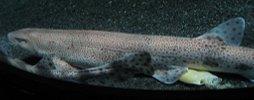

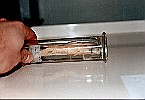
.JPG)
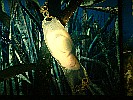
_(in%20Donovan,%201802).jpg)

